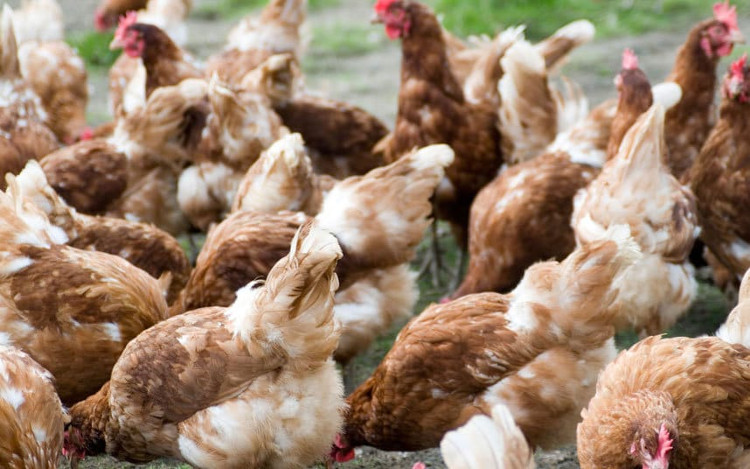Deadly bacteria in chicken can resist antibiotics
Half of the bacteria that cause fatal food poisoning are often found in chickens in supermarkets that are able to resist the most powerful antibiotics currently available, according to a recent report by the Inspection Agency. Food Determination (FSA).
The bacterium named scientific campylobacter is the main driver of about 280,000 food poisoning cases with more than 100 deaths in the UK each year.
Current cases of poisoning are treated with a group of antibiotics called fluoroquinolones , with the most common main components including ciprofloaxin and naldixic . There are a number of bacteria that FSA found in poultry meat showed resistance to both drugs. This means that some patients will not be able to be treated.
Antibiotic resistance of these bacteria has doubled in 10 years; meanwhile, by 2005, only 15% of bacteria could be resistant to ciprofloaxin and 22% of nalidixic resistance.
On Friday November 25, FSA had a meeting with all major retailers to discuss the latest research findings and find possible solutions to minimize the risk. consumer infections.

Although cooked, the bacteria in chicken are still capable of causing diarrhea, dysentery syndrome .
Professor Brendan Wren, Dean of the Department of Infectious and Tropical Diseases and Director of the London Institute of Hygiene and Tropical Medicine said: "In terms of the spread of Campylobacter bacteria - the main agent of poisoning food, about half of these bacteria are resistant to many antibiotics that are really alarming ".
"This has an impact on the treatment process, but also on the spread of antibiotic resistance to other types of bacteria in the food chain."
Early FSA tests showed that campylobacter is present in more than 65% of chicken in some supermarkets in the UK, with some supermarkets such as Marks & Spencer, Sainsbury's and Waitrose all being infected. bacteria more than 50%. Farmers are often blamed for this problem because according to many campaign activists, they impregnated too many antibiotics in animal food.
Although this bacterium can be killed by thoroughly cooking food, they are still capable of causing diarrhea, dysentery syndrome including symptoms such as cramps, fever and body aches. In critical cases it can lead to death.
The most effective way to prevent infection is to keep the kitchen hygienic, especially hand washing; Keep cooked and uncooked cooked foods separately. We also should not wash chicken under tap water.

We should not wash chicken under tap water.
A spokesman for the British Retail Council (BRC) said: "Retailers are working closely with farmers and suppliers to ensure antibiotics are used responsibly in the chain. supply, that is to say, in breeding should balance between ensuring the health of animals with reasonable use of drugs when necessary ". The report also warns that there is not enough information to confirm safety in other areas of the food production chain.
Professor Mark Woolhouse of the University of Edinburgh said: "We need to fold information about human exposure to antibiotic-resistant bacteria in food and consider whether the exposure is following. the direction of increase or not ".
One of the most important results of the report is the lack of data, and this report concludes that we need to monitor it more closely. I fully support this proposal.
The good news is that the UK has set a target to reduce the amount of antibiotics used in food production."Better monitoring mechanisms are needed so that we can determine whether these goals are effective in reducing problems."
- Improper washing of chicken can spread deadly bacteria
- Find a mechanism to help bacteria not only resist but also antibiotics
- Mechanism of resistance to many bacterial drugs
- New antibiotic resistance
- What are antibiotics and classify antibiotics
- Bacteria 'super' are resistant to drugs when in outer space
- Bad habits of parents hurt the liver and kidneys, endanger children
- Bacteria resistant to two types of prophylactic antibiotics have been found in the United States
- The last defensive layer before the virus takes us back to the Stone Age
- Pharmaceutical originated from the sea
- The world is depleted of new generation antibiotics
- Find the gene that causes bacteria to disable antibiotics
 The United Nations' all-human warning: All antibiotics are becoming useless
The United Nations' all-human warning: All antibiotics are becoming useless How did bacteria learn to fight antibiotics?
How did bacteria learn to fight antibiotics? 10 million deaths are one of the startling numbers about 'Antibiotic resistance'.
10 million deaths are one of the startling numbers about 'Antibiotic resistance'. 7 principles when using antibiotics
7 principles when using antibiotics